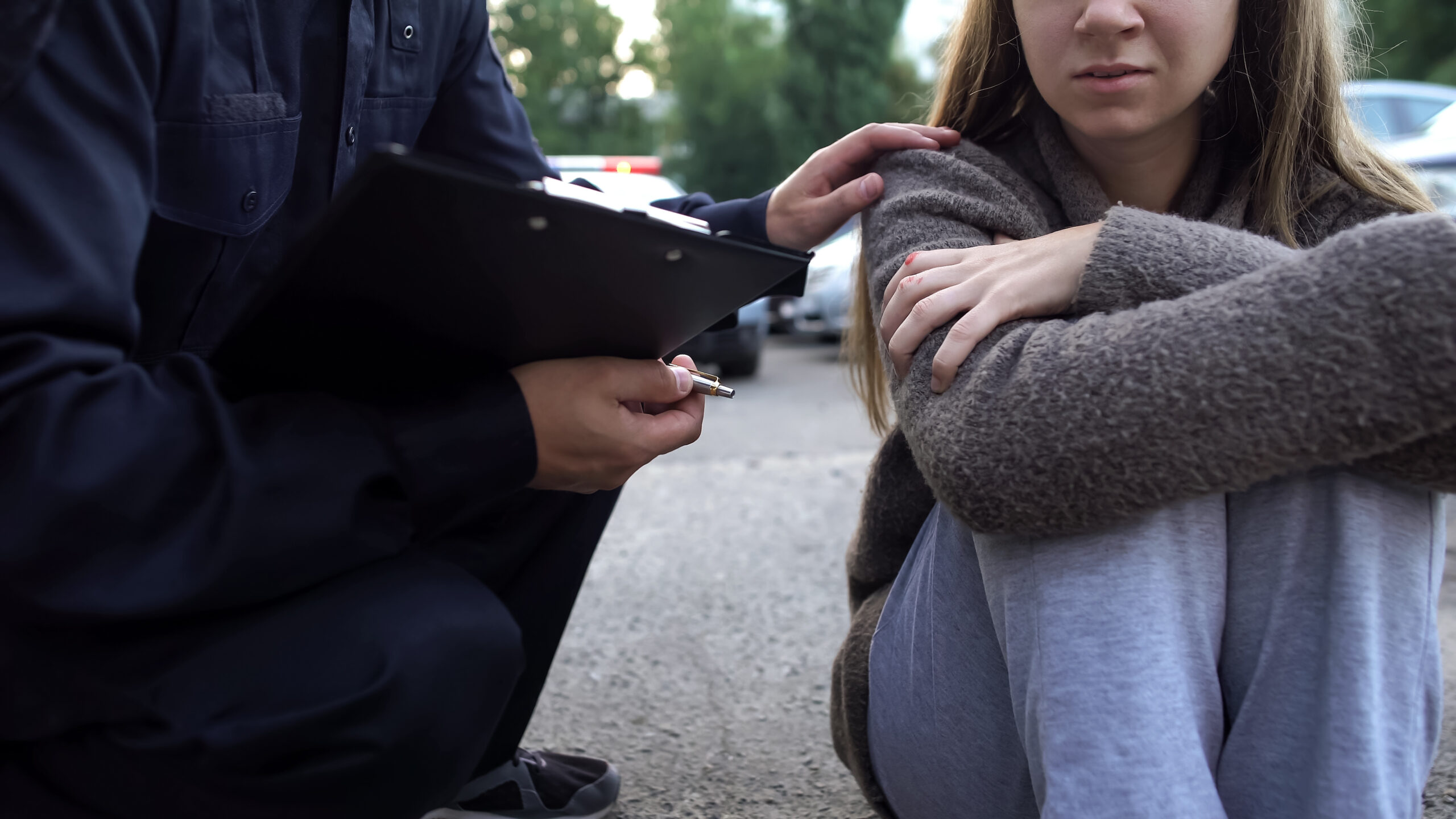
As human trafficking rings and leaders often target those that are most vulnerable, youth and teens previously or presently in foster care are often sourced. In fact, the National Foster Youth Institute recently estimated that 60 percent of child sex trafficking victims have been within foster care (or another part of the larger child welfare system). Learn the risk factors, signs of trafficking and how to help!

Know the Risk Factors!
While anyone can experience trafficking certain communities of people may be more vulnerable than others. Traffickers recognize and take advantage of people who are vulnerable. People may be vulnerable for various reasons.
Unstable Housing
People who experience housing insecurity are more likely to be vulnerable to human trafficking than those with secure housing.
Previous Abuse
Those who have experienced other forms of violence such as sexual abuse or domestic violence in the past may be more vulnerable to human trafficking.
Youth
Youth who are runaways, or involved with the juvenile justice or child welfare system are more vulnerable to human trafficking.
Substance Abuse
Those with a caregiver or family member with substance abuse issues or who abuse drugs and alcohol themselves are more likely to be susceptible to trafficking.
Undocumented
Those without legal citizenship are more likely to be trafficked due to fear of reprecussions such as deportation
Poverty
People facing poverty or who are in dire economic need may be more vulnerable to trafficking.
Trafficking may happen to anyone but evidence suggests that people of color and LGBTQ+ people are more likely to experience trafficking than other demographic groups. Generational trauma, historic oppression, discrimination, and other societal factors and inequities create community-wide vulnerabilities.
Know the Signs!
As the U.S. anti-trafficking movement has grown in our understanding of this diverse and complex crime, we are learning more on how to help identify and report possible trafficking. Everyone can help by learning the signs of potential trafficking.
Abuse/Neglect
Signs of physical or sexual abuse in a child, drug use or unaddressed health issues should be reported regardless but they may be signs of something deeper as well, such as human trafficking.
Unexplained Absences
If a child is constantly missing school and reluctant to explain or struggles to stay awake in class it might be a sign of trafficking. In addition poor grades, no longer participating in activities they once enjoyed and sudden reclusive behavior may be signs as well.
Housing Insecurity
Living out of suitcases, at motels, or in a car, or other evidence of housing insecurity can point to a potential trafficking situation.
Unexplained Money and Goods
Children with large amounts of money or goods that are inconsistent with their access to them or their socioeconomic situation may be in trafficking situations.
Handler
An overly controlling adult who tends to speak for the child, refuses to allow the child to speak privately or the child’s words seem rehearsed or scripted could be a sign of human trafficking.
These risk factors and signs should not be considered a definitive checklist or an assessment tool. Rather, if observed they may be an opportunity to ask more questions, make a report to NCMEC’s CyberTipline or connect the child to resources for prevention or intervention.
MYTH BUSTERS
Dispelling common myths and misconceptions people may have over human trafficking helps better spread awareness over the issue.
MYTH: All human trafficking involves commercial sex
FACT: Human trafficking is the use of force, fraud or coercion to get another person to provide labor or commercial sex. Worldwide, experts believe there are more situations of labor trafficking than of sex trafficking. However, there is much wider awareness of sex trafficking in the United States than of labor trafficking.
MYTH: Only women and girls can be victims and survivors of sex trafficking
FACT: One study estimates that as many as half of sex trafficking victims and survivors are male. Advocates believe that percentage may be even higher but that male victims are far less likely to be identified. LGBTQ boys and young men are seen as particularly vulnerable to trafficking.
MYTH: Human trafficking involves moving, traveling or transporting a person across state or national borders
FACT: Human trafficking is often confused with human smuggling, which involves illegal border crossings. In fact, the crime of human trafficking does not require any movement whatsoever. Survivors can be recruited and trafficked in their own home towns, even their own homes.
MYTH: People being trafficked are physically unable to leave their situations/locked in/held against their will
FACT: That is sometimes the case. More often, however, people in trafficking situations stay for reasons that are more complicated. Some lack the basic necessities to physically get out – such as transportation or a safe place to live. Some are afraid for their safety. Some have been so effectively manipulated that they do not identify at that point as being under the control of another person.
MYTH: Traffickers target victims they don’t know
FACT: Many survivors have been trafficked by romantic partners, including spouses, and by family members, including parents.
MYTH: It’s always or usually a violent crime
FACT: By far the most pervasive myth about human trafficking is that it always – or often – involves kidnapping or otherwise physically forcing someone into a situation. In reality, most human traffickers use psychological means such as tricking, defrauding, manipulating or threatening victims into providing commercial sex or exploitative labor.
MYTH: Human trafficking only happens in illegal or underground industries
FACT: Human trafficking cases have been reported and prosecuted in industries including restaurants, cleaning services, construction, factories and more.
MYTH: If the trafficked person consented to be in their initial situation, then it cannot be human trafficking or against their will because they “knew better”
FACT: Initial consent to commercial sex or a labor setting prior to acts of force, fraud, or coercion (or if the victim is a minor in a sex trafficking situation) is not relevant to the crime, nor is payment.
MYTH: Labor trafficking is only or primarily a problem in developing countries
FACT: Labor trafficking occurs in the United States and in other developed countries but is reported at lower rates than sex trafficking.
MYTH: Only undocumented foreign nationals get trafficked in the United States
FACT: Polaris has worked on thousands of cases of trafficking involving foreign national survivors who are legally living and/or working in the United States. These include survivors of both sex and labor trafficking.
How to Help
If you are in immediate danger, please call 911.
If you or someone you know needs help, call the National Human Trafficking Hotline toll-free hotline, 24 hours a day, 7 days a week at 1-888-373-7888 to speak with a specially trained Anti-Trafficking Hotline Advocate. Support is provided in more than 200 languages.
You can also email them at help@humantraffickinghotline.org. or submit a tip online here.
All communication with the hotline is strictly confidential.
